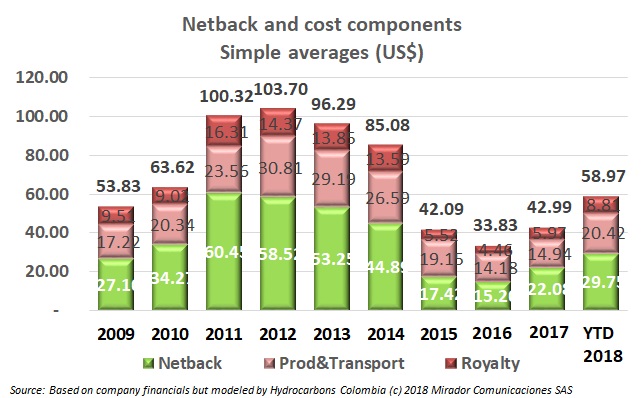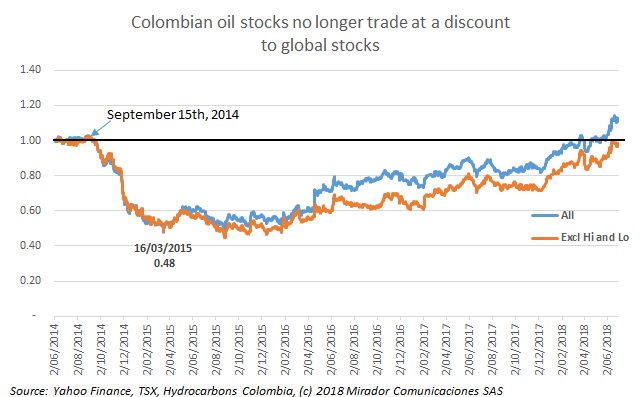Colombia needs to increase its reserves to solve concerns about self-sufficiency in the long term and the sector is working to achieve it. Parex Resources (TSX: PXT) announced a new discovery in the Capachos block.
Ecopetrol (NYSE: EC), Equion, Frontera Energy (TSE: FEC) and Geo Park (NYSE: GPRK) spoke about their successful social investment projects in Casanare, Santander and Huila, among others. These and other Corporate Social Responsibility (CSR) stories in our periodic summary.

Our Analyst complained that we had taken his usual space in the newsletter for our various end-of-Santos-government reviews. (Normally he complains because he has no idea what to write about come the Friday deadline, so this was a first.) He was especially concerned because he had good news to report.
The National Hydrocarbons Agency (ANH) spoke about the Permanent Competitive Procedure System, approved on August 6th, 2018.

When Ronald Pantin was CEO of Pacific Rubiales he would complain that investors applied a ‘Colombia discount’ to Colombia-committed stocks. For a long time that appeared to be true, but it has been getting smaller and, this quarter, it disappeared. However, there are some important caveats.
Terpel completed 50 years of operation recently and its president Sylvia Escovar spoke about the company’s plans, challenges and projects in the country and other relevant issues.
Ocensa, Repsol (MSE: REP) and Equion updated on the development of successful social investment projects in their areas of influence. These and other Corporate Social Responsibility (CSR) stories in our periodic summary.
The government announced that the savannas of Cinaruco (Arauca) are now part of the list of protected areas in Colombia. The development of these and more stories in our periodic Eco summary.
The firm won the Latinoamerica Verde (literally: ‘Green Latin America’) Award, for its successful environmental compensation project in Casanare.

There was considerable debate among industry watchers about whether companies spent the Capex they expected to in the first half of 2018 or held the money back. As usual every case is different – and we had to make some assumptions — but it looks like they spent as expected or more, except ECP.